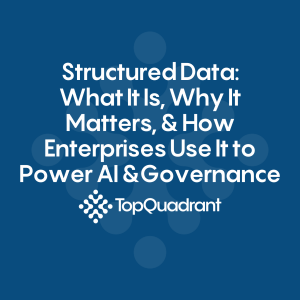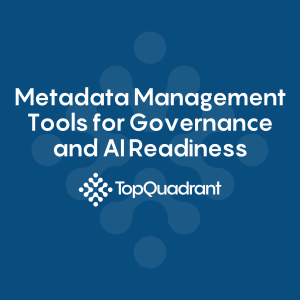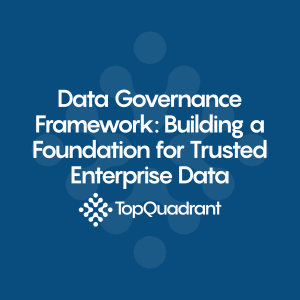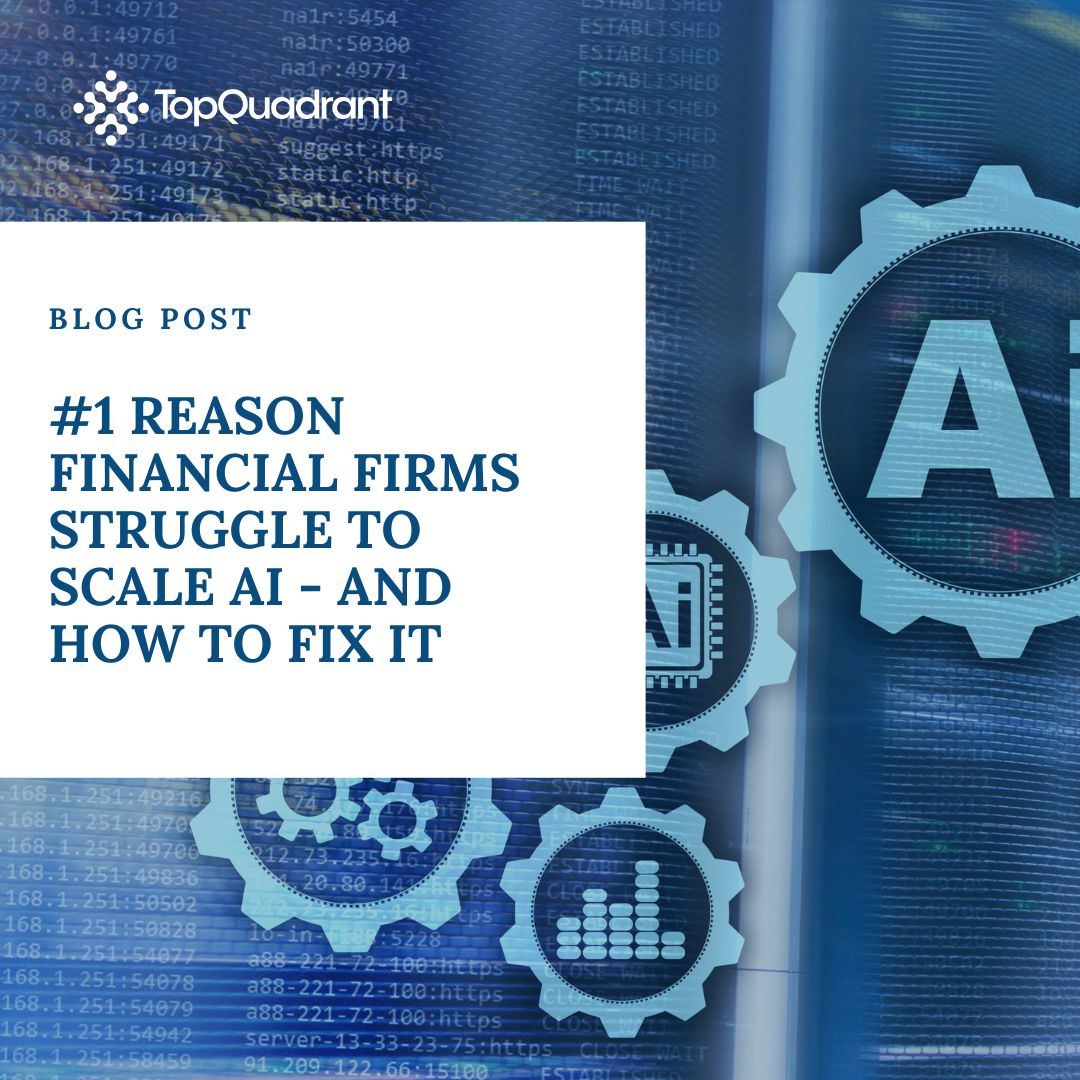Blog | Enterprise Data Modeling for Connected Data

Data modeling lies at the heart of every successful data-driven enterprise. It provides the structure and logic that allow organizations to transform raw information into meaningful insights. By defining how data is organized, related, and interpreted, data modeling creates the foundation for analytics, governance, and AI readiness.
In modern enterprises, the complexity of data continues to grow. Information flows from countless systems across cloud platforms, applications, and business units. Without a consistent model, this data becomes fragmented and difficult to use. Data modeling resolves this by bringing structure to chaos, aligning business needs with technical implementation, and ensuring that data is consistent, traceable, and reusable across the organization.
At its core, data modeling is about understanding and representing the relationships that exist within data. It is both a technical and conceptual discipline, blending logic, semantics, and governance. As enterprises adopt modern data architectures, the importance of effective data modeling becomes even more apparent. It connects the dots between data governance, metadata management, and AI-driven innovation.
The Role of Data Modeling in Modern Enterprises
Enterprises rely on data to drive decisions, automate operations, and deliver customer experiences. However, data on its own is rarely ready for analysis or automation. It must first be organized into a structure that reflects real-world entities and relationships. Data modeling provides that structure, enabling consistency and interoperability across systems.
A well-designed data model represents how an organization perceives its business. It captures entities such as customers, products, or transactions and defines how they relate to one another. This abstraction allows data teams to create a unified understanding of information, even when it originates from multiple systems.
Modern data modeling also incorporates governance and lineage. It does not merely describe how data is stored but also how it flows, who owns it, and how it aligns with business terms. This contextual understanding transforms static data models into living frameworks that evolve with the organization’s needs.
The outcome is a shared data language that bridges technical and business perspectives. For analysts, it means faster insight generation. For IT teams, it simplifies integration and maintenance. For leadership, it provides confidence that decisions are based on accurate and consistent information.
How Data Modeling Connects to Metadata and Governance
Data modeling and metadata management are deeply interconnected disciplines. Metadata describes data – its meaning, format, and lineage – while data modeling provides the logical and structural foundation that gives metadata its context. Together, they define not just what data exists but how it relates to everything else.
In a well-governed environment, data models act as the blueprint for metadata repositories. They define relationships and hierarchies that allow governance teams to enforce standards and policies. For example, when a governance policy defines how personally identifiable information should be managed, the data model ensures that this information is consistently represented and tagged across systems.
Metadata management tools capture and visualize these relationships, but the underlying model gives them meaning. Without data modeling, metadata is often siloed or inconsistent. With modeling, it becomes interconnected and semantically rich, allowing for advanced analytics, lineage tracing, and knowledge graph integration.
This synergy between modeling and metadata is essential for AI readiness. AI systems depend on structured, contextualized data. A robust data model ensures that inputs are well-defined, relationships are explicit, and semantics are preserved. This creates transparency in AI-driven decision-making and facilitates trust across business processes.
The Evolution of Data Modeling
Traditional data modeling focused primarily on database design. Early relational models defined tables, columns, and relationships to support transactional systems. As data volumes grew and new architectures emerged, modeling evolved to address distributed and unstructured environments.
Dimensional modeling extended the concept to data warehouses, optimizing structures for analytics and reporting. Conceptual, logical, and physical models became standard components of enterprise data architecture. Each layer provided a different level of abstraction, from high-level business concepts to detailed implementation.
Today, data modeling has expanded beyond schema design. It now encompasses semantic modeling, ontology development, and knowledge graph representation. These approaches reflect the growing need for flexibility, interoperability, and contextual understanding.
Semantic data models capture meaning, not just structure. They define relationships using ontologies and taxonomies that align with business logic. Knowledge graph–based modeling takes this a step further, connecting data through relationships that mirror real-world interactions. This approach supports AI and advanced analytics by enabling contextual queries and reasoning across datasets.
As data ecosystems become more complex, traditional linear models are giving way to graph-based and federated approaches. These models accommodate the distributed nature of modern data architectures, supporting hybrid cloud environments, data meshes, and domain-driven governance.
Types of Data Models
Data modeling typically operates across three main levels of abstraction. The conceptual model defines the broad structure of the data environment from a business perspective. It identifies entities, their attributes, and relationships without technical detail.
The logical model refines this structure into a more detailed representation, specifying data types, relationships, and constraints. Logical models translate business requirements into a form that can be implemented across systems.
Finally, the physical model describes how the data will be stored in databases, data warehouses, or data lakes. It includes technical details such as indexing, storage format, and performance optimization.
While these distinctions remain important, the boundaries between them are blurring. Modern platforms often allow business and technical users to collaborate in real time, refining models as data evolves. This continuous modeling approach aligns with agile and DevOps methodologies, promoting flexibility and collaboration.
Knowledge graphs and ontologies represent a parallel form of modeling. They define entities and relationships using semantic standards such as RDF and OWL, making data machine-readable and interoperable across platforms. These semantic models are increasingly being adopted by enterprises seeking to build AI-ready data foundations.
The Importance of Business Context
Effective data modeling requires collaboration between technical experts and business stakeholders. Without business input, models risk becoming technically correct but practically irrelevant. The most successful data models capture not only the structure of data but also the intent behind it.
Business context provides meaning to entities and relationships. For instance, the term “customer” may have different definitions across departments. A unified data model reconciles these variations into a consistent framework that supports enterprise-wide reporting and governance.
By embedding business definitions into data models, organizations reduce ambiguity and improve data literacy. When data consumers understand what each entity represents, they can use data more effectively and confidently. This alignment also simplifies compliance and reporting by ensuring consistent terminology across systems.
Data Modeling in the Era of AI and Automation
Artificial intelligence and automation depend on structured, high-quality data. Data modeling provides the foundation that makes this possible. By defining relationships, hierarchies, and semantics, data models ensure that AI systems understand the meaning and context of the data they consume.
AI models trained on poorly modeled data often produce unreliable or biased results. A strong data model mitigates these risks by enforcing consistency, lineage, and governance. It ensures that data used for training or inference is accurate, traceable, and aligned with business intent.
In addition, modern data modeling tools incorporate automation themselves. They can infer relationships, suggest schema improvements, and validate data against governance rules. Some tools integrate directly with metadata management systems to maintain synchronization between models and real-world data.
Automation also extends to model generation. Using AI-assisted modeling, organizations can automatically generate conceptual or logical models from existing metadata. This accelerates design and helps keep models up to date as systems evolve.
The result is a continuous feedback loop where data models inform AI systems, and AI systems refine and enhance data models. This dynamic relationship accelerates digital transformation and drives innovation.
Integrating Data Modeling with the Data Lifecycle
Data modeling is not a one-time task performed at the start of a project. It is a continuous process that evolves with the data lifecycle. As new systems are introduced and business needs change, models must be reviewed and updated.
In the ingestion phase, data modeling defines how incoming data is structured and validated. During transformation, it ensures consistency across datasets and facilitates lineage tracking. In analytics and visualization, it provides the semantic layer that allows users to interpret results accurately.
Integration across the lifecycle also supports governance and compliance. When models are connected to metadata repositories, lineage systems, and policy engines, they create a closed loop of visibility and control. This ensures that data remains accurate and compliant throughout its journey from source to consumption.
Modern enterprises use modeling not only for data design but also for communication. Visual models help stakeholders understand complex architectures and data relationships, enabling better collaboration and decision-making.
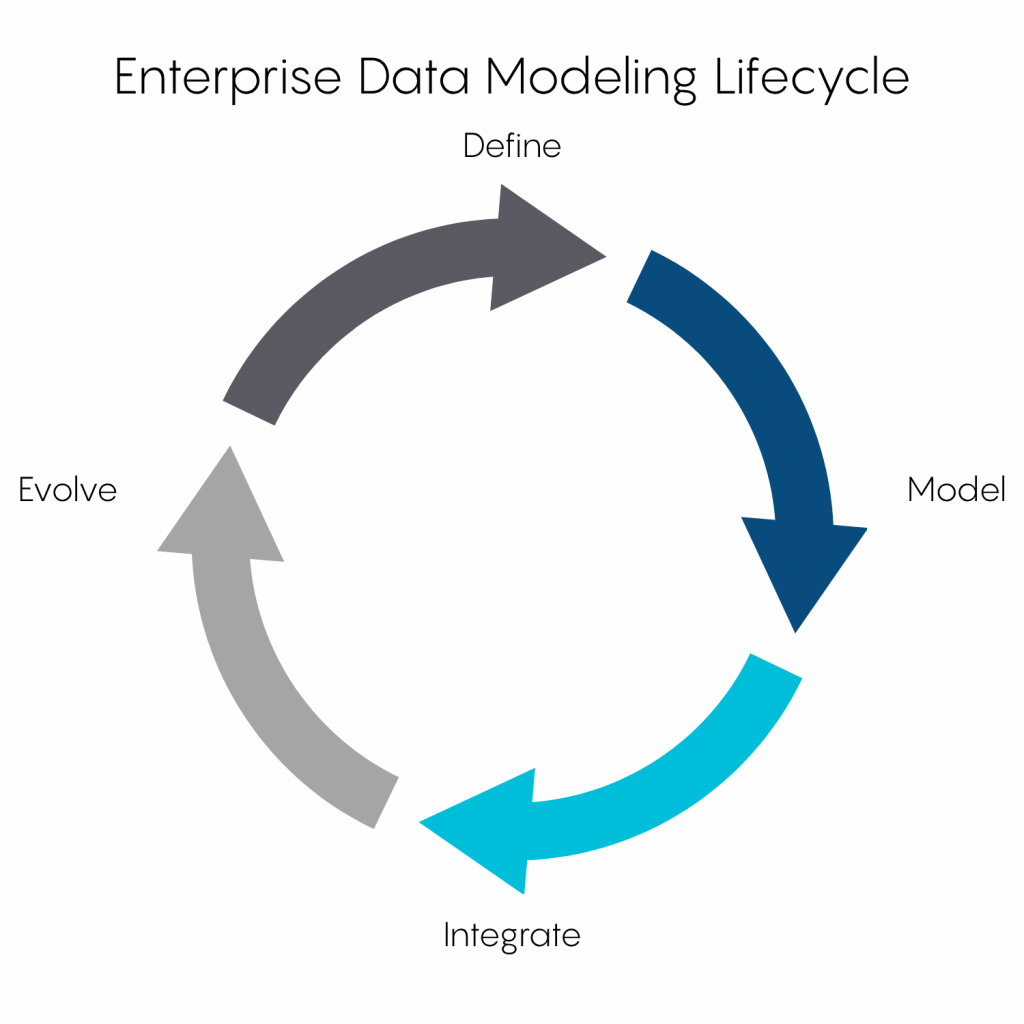
The Relationship Between Data Modeling and Knowledge Graphs
Knowledge graphs have transformed how organizations think about data modeling. Rather than relying solely on hierarchical or tabular structures, knowledge graphs represent data as interconnected nodes and relationships. This approach mirrors how humans understand context and meaning.
In a knowledge graph, entities such as customers, products, or transactions are connected through semantic relationships. This flexible structure allows for richer querying and reasoning compared to traditional relational models.
For data modelers, knowledge graphs represent a new paradigm. They allow for more dynamic, adaptable models that evolve as data changes. Instead of rigid schemas, relationships are defined semantically, enabling interoperability across domains and systems.
Knowledge graph-based data modeling supports data integration, lineage, and governance at scale. It provides the backbone for AI-driven insights by linking data across silos and enabling natural language queries. This form of modeling is particularly valuable for organizations pursuing AI readiness and data fabric architectures.
Challenges and Best Practices in Data Modeling
Despite its importance, data modeling presents several challenges. One of the most common is maintaining alignment between business needs and technical design. Models that are too rigid can become barriers to innovation, while models that are too loose risk inconsistency and confusion.
Data sprawl adds complexity. As organizations integrate more data sources, ensuring consistency across models becomes increasingly difficult. Metadata synchronization and governance integration are critical for maintaining accuracy.
Another challenge is adoption. Many business stakeholders see data modeling as a technical task rather than a strategic function. Successful initiatives focus on collaboration, education, and visualization. When stakeholders understand the purpose and value of data modeling, participation and accuracy improve.
Agility is also essential. Modern modeling must accommodate change without extensive rework. Using modular and semantic models helps achieve this flexibility.
Finally, organizations should view data modeling as an ongoing discipline, not a one-time deliverable. Continuous validation, documentation, and integration with governance tools ensure that models remain accurate and relevant over time.
The Business Value of Data Modeling
Data modeling delivers measurable business benefits by improving data quality, reducing redundancy, and accelerating insight generation. It ensures that data assets are organized, connected, and aligned with business goals.
From a governance perspective, data modeling creates transparency and accountability. It allows organizations to trace data back to its origin and understand how it is transformed and used. This visibility is critical for compliance and risk management.
Operationally, strong data models improve system performance and interoperability. They streamline integration between applications, reducing time and cost. In analytics, they enhance accuracy by ensuring consistent definitions and hierarchies.
For leadership, data modeling provides confidence that decisions are based on reliable and well-structured information. It transforms data from a technical asset into a strategic resource that drives innovation and growth.
The Future of Data Modeling
As data landscapes evolve, data modeling will continue to adapt. Future models will emphasize automation, semantics, and interoperability. AI-assisted modeling tools will infer structures from raw data, recommend optimizations, and maintain alignment with governance frameworks.
Semantic models and knowledge graphs will become standard in enterprise architectures, supporting federated data management and AI explainability. These models will enable organizations to query data contextually, reason across domains, and integrate human and machine understanding.
In the future, data modeling will also become more collaborative. Platforms will enable simultaneous editing by business and technical users, fostering shared ownership of data design. Visualization and storytelling will play a larger role, making models more accessible to non-technical audiences.
Ultimately, data modeling will remain central to digital transformation. It connects people, processes, and systems through a shared understanding of data. As enterprises embrace automation and AI, modeling will provide the context and clarity that keep innovation grounded in governance and trust.
-
Data Governance67
-
Vocabulary Management9
-
Knowledge Graphs43
-
Ontologies15
-
Data Fabric8
-
Metadata Management18
-
Business Glossaries6
-
Semantic Layer11
-
Reference Data Management7
-
Uncategorized2
-
Data Catalogs15
-
Datasets11
-
Taxonomies4
-
News5
-
Policy and Compliance5
-
Life Sciences6
-
Automated Operations6
-
Financial Services9
-
AI Readiness25
-
Podcasts1
